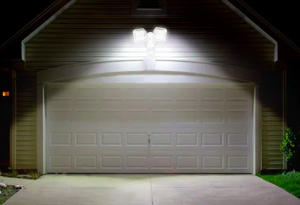Introduction
In Pakistan, where efficient and cost-effective street lighting is essential for public safety and sustainable development, the transition to LED (Light Emitting Diode) street lights has become a significant priority for municipalities and local governments. LED technology offers an array of options in terms of wattage, making it crucial to choose the right LED streetlights for various applications. In this comprehensive shopping guide, we will explore the factors to consider when purchasing LED street lights with wattages ranging from 50 to 200 watts in the context of Pakistan's unique requirements and challenges.
Importance of LED Street Lighting in Pakistan
Safety Enhancement: Adequate street lighting is a critical factor in enhancing safety on roads and in public spaces. Well-lit streets reduce the risk of accidents, and criminal activities, and provide a sense of security for pedestrians and drivers.
Energy Efficiency: Pakistan faces challenges such as power shortages and high electricity costs. Traditional street lighting systems, like high-pressure sodium (HPS) or metal halide lamps, are energy-intensive and contribute to high energy bills and carbon emissions. LED street lights are highly energy-efficient and offer substantial cost savings.
Environmental Impact: LED technology not only reduces energy consumption but also minimizes light pollution and contributes to a healthier and more sustainable urban environment. LED lights emit less heat and do not contain hazardous materials like mercury.
Cost Savings: While LED streetlights may have a higher initial cost compared to traditional options, they offer substantial cost savings over their lifetime. Lower energy consumption, reduced maintenance expenses, and extended lifespans make LED street lighting a cost-effective choice in the long run.
LED Street Lights: Wattage Selection
Selecting the appropriate wattage for LED streetlights is crucial to meet the specific lighting needs of different areas and applications. In Pakistan, LED street lights are available in wattages ranging from 50 to 200 watts. Here's a breakdown of what each wattage range is suitable for:
1. 50-100 Watts LED Street Lights:
Ideal for: Residential areas, pathways, and small streets.
Key Features: These lights provide sufficient illumination for smaller streets and residential neighborhoods. They are energy-efficient and cost-effective, making them suitable for areas with budget constraints.
2. 100-150 Watts LED Street Lights:
Ideal for: Local roads, parking lots, and medium-sized streets.
Key Features: LED streetlights in this range offer a balance between illumination and energy efficiency. They are suitable for moderately busy roads and public spaces.
3. 150-200 Watts LED Street Lights:
Ideal for: Major roads, highways, commercial areas, and places with heavy traffic.
Key Features: These lights provide higher illumination levels and better coverage, making them suitable for wider roads, highways, and areas with heavy traffic. They are designed for enhanced visibility.
Factors to Consider When Shopping for LED Street Lights
1. Quality and Reliability:
2. Energy Efficiency:
Recommendation: Look for LED street lights with high energy efficiency ratings. Energy-efficient lights consume less electricity, resulting in cost savings and reduced environmental impact.
3. Luminous Efficacy:
Recommendation: Consider the luminous efficacy of LED street lights. This metric measures how efficiently the light source converts electrical power into visible light. Higher luminous efficacy indicates greater energy efficiency.
4. Color Temperature:
Recommendation: Choose LED street lights with an appropriate color temperature. Warmer color temperatures (e.g., 2700-3000K) are suitable for residential areas, while cooler temperatures (e.g., 4000-5000K) are ideal for commercial and major road applications.
5. Lifespan and Durability:
Recommendation: Check the expected lifespan of LED street lights. Quality LED fixtures can last over 50,000 hours. Consider factors like weather resistance, corrosion resistance, and vandal resistance for durability.
6. Certification and Compliance:
Recommendation: Ensure that LED street lights comply with relevant safety and quality standards. Certifications like UL, CE, and RoHS can be indicators of compliance.
7. Optics and Light Distribution:
Recommendation: Assess the optics and light distribution of LED street lights. Different optics are suitable for various applications, such as narrow beam angles for pathways and wide beam angles for streets.
8. Smart Lighting Features:
Recommendation: Some LED street lights come with smart features like dimming, remote monitoring, and motion sensing. Evaluate whether such features are necessary for your specific application.
9. Local Regulations and Standards:
Recommendation: Familiarize yourself with local regulations and standards regarding street lighting. Compliance with these standards is essential to ensure safety and avoid potential legal issues.
10. Total Cost of Ownership (TCO):
Recommendation: Consider the total cost of ownership over the lifespan of LED street lights. This includes the initial cost, energy consumption, maintenance expenses, and replacement costs. A thorough TCO analysis helps in making an informed decision.
Conclusion
LED street lighting is a critical element of urban infrastructure in Pakistan, contributing to safety, energy efficiency, and environmental sustainability. Choosing the right wattage and features for LED street lights is essential to meet the specific lighting needs of different areas and applications.
By considering factors such as quality, energy efficiency, durability, and compliance with local regulations, municipalities and local governments in Pakistan can make informed decisions when shopping for LED street lights. Investing in high-quality LED fixtures with the appropriate wattage not only enhances safety and visibility but also leads to long-term cost savings and contributes to a greener and more sustainable urban environment.






